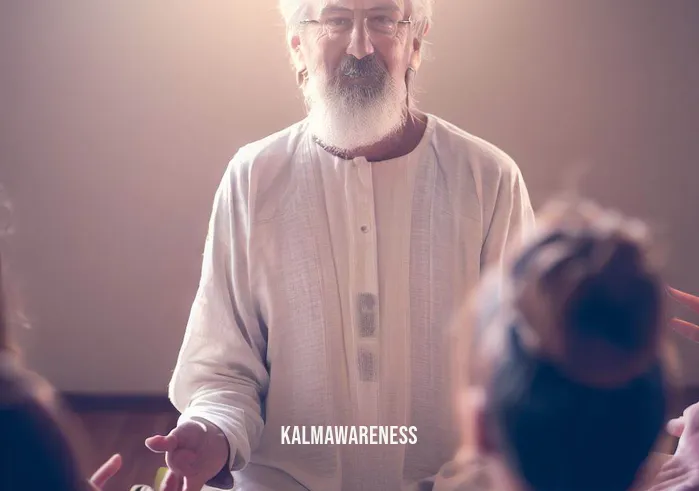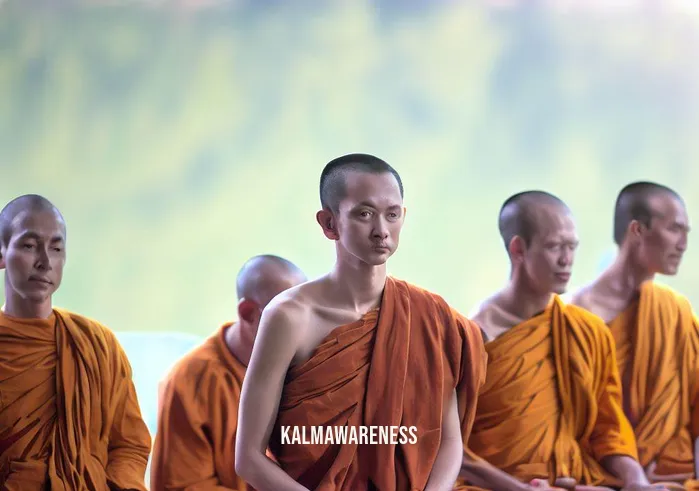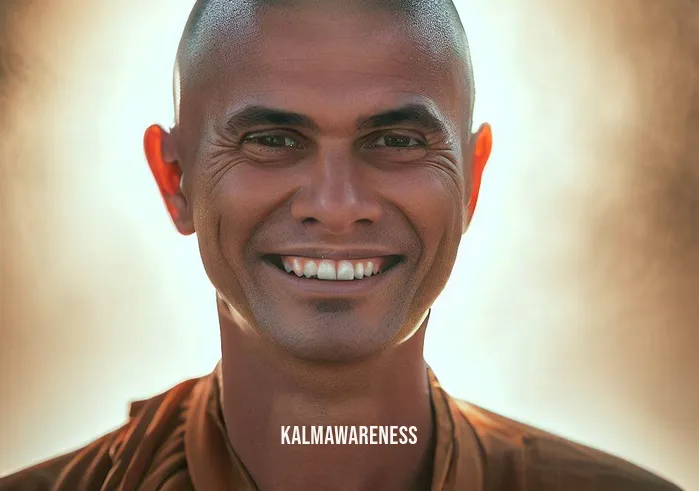The Journey to Dhammasukha: A New Perspective on Inner Happiness
The quest for happiness is a universal human endeavor, but the ways we seek to attain it are as varied as the cultures that have risen and fallen across time. In our fast-paced, modern society, happiness often equates to material success or sensory pleasure. However, ancient wisdom offers another path, one that directs the seeker inwards. This is the realm of dhammasukha, a term rooted in Buddhist teachings that refers to a profound state of inner contentment, peace, and happiness. It stands as a sentinel in the intersection of mindfulness, meditation, and inner wellness, offering a fuller, more sustainable happiness than the transient delights we often chase. In this segment, we will unravel the foundational elements of dhammasukha and how it could offer a path to sustainable happiness.
What is Dhammasukha?
The term dhammasukha is derived from two Sanskrit words: “dhamma,” which can mean a teaching or a law of nature, and “sukha,” which translates to happiness or ease. Combined, it signifies a happiness that comes from aligning oneself with natural laws or ethical principles, which are often manifested through the practice of mindfulness and meditation.
“Dhammasukha is a happiness that springs from a well-nurtured mind and an aligned spirit, devoid of the typical modern complexities.”
Mindfulness: The First Step
Before delving into meditation or other spiritual practices, one must first cultivate mindfulness. Mindfulness involves attaining a peaceful state of mind in which thoughts are not occupied by worry. It also helps one to stabilize their emotional landscape, thus making it easier to engage in deeper spiritual practices.
For instance, a practice like mindful movement sleep focuses on the role of physicality in cultivating a mindful state. This is particularly important in modern life, where sedentary habits often interfere with mental clarity.
Breathing and Meditation: Moving Beyond Surface-level Happiness
Once you’ve established a mindful framework, the next step is to deepen your awareness through meditation exercises. Breath is often considered an essential element of some meditation exercises. Paying close attention to one’s breath can significantly improve one’s mental state, leading to insights that can translate to a broader sense of well-being. Techniques like Jack Kornfield’s meditation for beginners offer a gateway to these deeper states of awareness.
Moreover, did you know you can even meditate lying down? Meditation isn’t confined to a specific posture; it’s about the mental state you cultivate.
Bringing Teens Into The Picture
It’s crucial to understand that this journey towards dhammasukha is not reserved for adults alone. For teenagers walking the fine line between childhood and adulthood, this form of inner happiness can offer balance. It serves as a strong mental framework, enabling them to navigate life’s challenges more effectively.
Rouse Yoga and Mindful Hypnobirthing
Dhammasukha can also be explored through variations of meditation and mindfulness techniques. For instance, practices like Rouse Yoga or mindful hypnobirthing offer specific frameworks that cater to unique life situations, such as physical wellness or childbirth.
Summary and Road Ahead
Dhammasukha provides an alternative route to happiness, one that doesn’t depend on external circumstances but cultivates a state of contentment from within. Through mindfulness and meditation, we can foster this profound sense of well-being. In the realm of dhammasukha, we learn that sustainable happiness is a possibility, not just a dream.
In the next segment, we’ll delve deeper into the transformative effects of dhammasukha, examining its role in sustainable self-care and its connection to other traditional wisdom teachings. Continue reading to explore how this ancient concept can have modern implications for your life.

The Nuances of Dhammasukha: Beyond the Surface of Inner Happiness
If the first segment served as an introduction to the ocean of dhammasukha, consider this your diving lesson. We are not merely skimming the surface; we are exploring the depths, where the corals of wisdom and the schools of inner peace reside. In doing so, we shall employ varied learning tools, from lists to tables, to make your journey smoother. Each paragraph and section is carefully designed to unravel a different layer, a different aspect of dhammasukha, leading you toward a more fulfilled, peaceful life.
Unlocking Dhammasukha Through Daily Practices
Embracing dhammasukha isn’t a one-time affair. It’s a daily commitment that involves a series of exercises and reflections. Here’s a list of some practical ways to integrate dhammasukha into your daily routine:
Gratitude Meditation: Before sleep, engage in gratitude meditation to acknowledge and appreciate the blessings in your life.
Mirror Gazing: Utilize mirror gazing to connect with your inner self, exploring your thoughts, emotions, and feelings.
Body Awareness: A daily ritual could be to touch that body part in a mindful way to bring awareness and presence into your physical being.
Sustainable Self-Care: Embedding sustainable self-care practices can add a level of physical wellness to your spiritual journey towards dhammasukha.
Train Your Mind: Remember, it’s crucial to train your mind to be stronger than your feelings, giving you control over your emotional states.
By adopting these daily practices, you can create a fertile ground for dhammasukha to flourish.
The Wisdom of Judgement
In your quest for inner tranquility and happiness, it’s vital to consult the judgement of the wise. Learning from the experiences and insights of those who have walked this path before can offer you shortcuts to self-realization and inner bliss.
A Comparative Look: Dhammasukha Vs. Modern Concepts of Happiness
To provide a more rounded view, let’s compare dhammasukha with modern concepts of happiness. The table below outlines the differences:
| Criteria | Dhammasukha | Modern Concepts of Happiness |
|---|---|---|
| Source | Internal, spiritual | External, materialistic |
| Duration | Sustainable, long-term | Short-term, fleeting |
| Foundation | Mindfulness, ethical principles | Sensory pleasure, social approval |
| Benefits | Mental clarity, emotional stability | Temporary relief, excitement |
| Practices Involved | Meditation, Mindfulness, Ethical Living | Consumption, Entertainment |
As you can see, dhammasukha offers a more sustainable and fulfilling form of happiness compared to the modern, more transient types.
The Enigma of Time: Pretty Soon and Dhammasukha
In our daily lives, we often fall victim to the pressure of time, always in a rush to accomplish more, to be more. The phrase “pretty soon” epitomizes our relentless chase for instant gratification. However, dhammasukha asks us to pause, to take our time, to indulge in the present. It doesn’t work on the principle of “pretty soon,” but rather, it evolves gradually, enriching your life with profound inner happiness.
One for Each Blessed Day
As you cultivate your journey toward dhammasukha, consider setting aside a moment for reflection, using teachings that offer wisdom for one for each blessed day. This practice can serve as a spiritual anchor, grounding you in principles that foster long-lasting happiness.
What Lies Ahead?
Having peeled back some of the layers surrounding dhammasukha, you might wonder what more there is to learn. In our next exploration, we will dive into the transformative power of dhammasukha in challenging life situations. We’ll discuss its role in mitigating stress, promoting mental health, and fostering deeper connections with others. Stay with us, as we take this enlightening journey one step further into the caverns of inner joy and peace.

Nurturing Hope and Aspiration Through Dhammasukha
If the preceding segments served as your compass, pointing you in the direction of profound inner happiness, then consider this chapter your map of hope and inspiration. The concept of dhammasukha, an internal state of peaceful joy, transcends mere knowledge; it is an experience awaiting your embrace. With this, let us delve into the realms of aspiration, hope, and motivation, nourishing the seed of dhammasukha within.
Quotations as Lighthouses in Your Journey
To illuminate the path towards a life filled with dhammasukha, quotations can act as guiding lighthouses. These powerful words encapsulate the essence of inner contentment and hope.
“You yourself, as much as anybody in the entire universe, deserve your love and affection.” – Buddha
This quote aligns well with the idea of mindful hypnobirthing, which emphasizes the significance of self-love and compassion in achieving a peaceful state of mind.“Inner peace begins the moment you choose not to allow another person or event to control your emotions.” – Pema Chödrön
Practices like Rouse Yoga can assist you in mastering your emotions, a cornerstone in achieving dhammasukha.“The mind is everything. What you think, you become.” – Buddha
Cultivating a positive mindset is foundational, and as you’ll discover in meditation made simple, it’s easier than you think.
The Inspirational Power of Mindfulness and Meditation
When it comes to gleaning inspiration from the practice of dhammasukha, you might find solace in the mindfulness techniques taught by Jack Kornfield for beginners. These teachings help instill a sense of hope and enlightenment, which is crucial in your pursuit of everlasting inner happiness or spiritual bliss.
Invigorating the Spirit Through Movement
Surprisingly, movement can also be a pathway to dhammasukha. Engaging in mindful movement before sleep, for example, can not only promote restful slumber but also contribute to a state of inner peace. It’s an overlooked yet powerful method for cultivating dhammasukha.
Teenagers and Dhammasukha: Hope for the Next Generation
In a world full of challenges and uncertainties, teaching the principles of dhammasukha to teenagers can be a beacon of hope. Such early adoption of mindfulness and inner happiness practices can shape their lives in meaningful ways, steering them toward a future laden with internal contentment and wisdom.
The Role of Breathing in Unlocking Inner Peace
Achieving dhammasukha also involves attaining a peaceful state of mind in which thoughts are not occupied by worry. Here, the simple act of breathing, whether you choose to meditate in a sitting posture or even while lying down, can have profound effects. By mastering your breath, you’re essentially opening the gateway to a life filled with serenity and inner joy.
What Awaits You Next
While we’ve explored the inspirational aspects of dhammasukha, the journey doesn’t end here. In the forthcoming segment, prepare to delve into the practical applications of dhammasukha in everyday life. We will scrutinize its efficacy in alleviating modern-day maladies such as stress, anxiety, and existential questions. If you’ve found solace and inspiration thus far, imagine what a deeper understanding could mean for your lifelong quest for enduring happiness and peace. So, are you ready to continue unraveling the mysterious yet fulfilling world of dhammasukha? Stay tuned.

Deconstructing Dhammasukha: A Guided Exploration
Embarking on a journey toward inner joy and tranquility often involves unraveling complex ideas to reach their core essence. If you have been following along, you’re aware of the transformative power of dhammasukha, an intrinsic state of well-being. As we near the climax of our voyage, let’s dissect this profound concept in manageable pieces for a well-rounded comprehension.
The Multi-Faceted Nature of Dhammasukha
Understanding the scope and depth of dhammasukha requires more than an over-simplified explanation. Let’s lay it out with bullet points for clarity:
- Conceptual Understanding: A fundamental grasp of the term and its role in Buddhist teachings.
- Mindfulness and Concentration: Critical elements in achieving inner happiness, a theme prevalent in sustainable self-care.
- Physical Aspects: Like the technique of touching specific body parts to direct mindful awareness and achieve physical relaxation.
- Daily Practices: Activities and exercises that facilitate dhammasukha, such as elemental meditation exercises.
Why the Rush for Depth?
You might wonder, how do we get deep so fast when exploring dhammasukha? The answer lies in its intrinsic universality; it is something every human seeks, consciously or unconsciously. Hence, it connects with us at a deep emotional and psychological level.
Tools to Master Your Journey
Ways to Train the Mind
- Affirmations: Reminding yourself of positive thoughts to strengthen your mental attitude, similar to the judgment of the wise.
- Meditation: A versatile tool for internal stabilization; understanding how to spell ‘stabilize’ correctly underscores the importance of a balanced internal state.
- Mindful Moments: Making a conscious effort to be present, an idea integral to the definition of keeping in mind.
Breathing Techniques
- Deep Breathing: Slowing down the breath to facilitate mental relaxation.
- Breath Counting: Counting breaths as a way of grounding oneself, drawing inspiration from practices like one for each blessed day.
The Spiritual Angle: Mirror Gazing and Gratitude
Did you know practices like mirror gazing have spiritual benefits? They can help you connect with your deeper self, which is essential for experiencing dhammasukha. Similarly, gratitude meditation before sleep can pave the way for a peaceful night and a fulfilling life.
Psychological Resilience: The Final Frontier
If you aspire to live a life overflowing with inner contentment, mastering the art of training your mind to be stronger than your feelings is vital. It’s not just about being emotionally robust; it’s about achieving a state of inner equilibrium that doesn’t waver in the face of life’s challenges.
What Lies Ahead
We’ve systematically peeled back the layers of dhammasukha, examining its facets, nuances, and tools that can help you achieve it. If this chapter served as your guide to understanding the ‘what’ and the ‘how,’ then the next segment is the culmination of our journey—the ‘why.’ Prepare to unlock the transformative power of this incredible concept in your life, as we conclude our exploration in the final chapter. The culmination promises to be an enlightening revelation, so stay tuned.

The Tapestry of Dhammasukha: A Grateful Farewell
As we approach the end of our in-depth exploration into the concept of dhammasukha, it’s time to revel in the insights gained and bask in the tranquility we’ve uncovered. Our odyssey has been an enlightening journey through mindfulness, inner happiness, and the myriad practices that lend themselves to this heavenly state. Let’s take this moment to reflect, rejoice, and look ahead.
The Lessons We’ve Learned
Our journey began with an introduction to the basics, offering a glimpse into the profound yet accessible domain of dhammasukha. We further navigated through techniques that range from mindful hypnobirthing to practices that teens can benefit from, such as mindful walking. We emphasized the importance of not just realizing but actualizing inner happiness, whether through yoga practices or through the calmness that comes from simply lying down to meditate.
The Joy of Flexibility
You’ve probably realized by now that the paths leading to dhammasukha are as varied as the people seeking it. From the various mindful movement exercises for sleep to approaches that require us to reach a peaceful state where worries cease to exist, there’s something for everyone. You don’t have to stick to one route; adaptability is key.
Dhammasukha: The Life-Long Companion
Remember, dhammasukha isn’t an elusive treasure to be found; it’s a lifelong companion to be nurtured. It’s the background music to your life’s ups and downs, your trusty ally in navigating challenges. It’s like that reassuring phrase “pretty soon,” signaling that whatever you’re going through will change soon enough.
A Standing Ovation to You!
We couldn’t have done this without your participation. Whether you’re a seasoned meditator or someone who’s just starting to understand the ABCs of mindfulness through guides like Jack Kornfield’s Meditation for Beginners, we thank you for your time and dedication. The discourse around dhammasukha wouldn’t be the same without your eagerness and questions.
What’s Next?
Although we’ve reached the end of this series, remember that the journey toward achieving inner well-being is a never-ending one. There’s so much more to explore, so much more to practice. If any topics weren’t entirely clear or you’d like a recap, it may be helpful to revisit the sections for a simpler understanding of meditation.
Your Call-to-Action: Join Us Again!
Let this be a commencement rather than a conclusion. Continue exploring our magazine for more refreshing content. If you’ve found value in this series, don’t forget to dive back into it whenever you need a refresher or a boost of motivation.
Signing Off With Gratitude
As we wrap up, I want to extend a heartfelt thank you for allowing us to accompany you on this journey towards achieving dhammasukha. Rest assured, there are plenty more enlightening topics to be discussed in our future editions. Until then, may your life be filled with inner happiness, peace, and above all, abundant dhammasukha.





